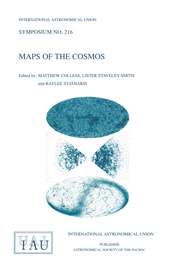No CrossRef data available.
Article contents
Star formation in NGC 3603
Published online by Cambridge University Press: 25 May 2016
Extract
NGC 3603 is the most massive optically visible H II region in our Galaxy and is considered to be the Galactic analogue to 30 Doradus and, thus, a prototype of the starburst phenomenon. Its core, known as WR 43 (HD 97950), contains several dozens of O-B0 stars within 35″. These have been studied with very high resolution in the optical and near-IR. Melnick, Tapia & Terlevich (1989) concluded that the starburst cluster has an age spread of 1 to 2 Myr and that its boundaries extend to ∼60″, while Eisenhauer et al. (1998) determined that the lower mass stars in the core are younger than 1 Myr.
- Type
- Part 4. Wolf-Rayet stars and other hot massive stars in the Galactic Center and in Local Group giant H II regions (individual stars)
- Information
- Copyright
- Copyright © Astronomical Society of the Pacific 1999


